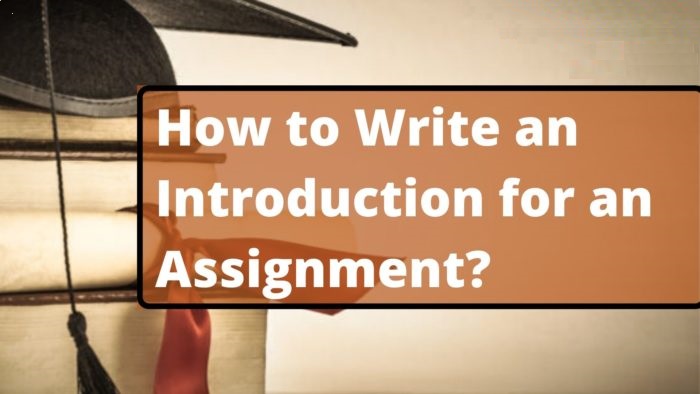How to Write an Introduction for an Assignment

A strong introduction allows readers to understand what text they are dealing with. In any case, it is necessary to outline the statements or the topic discussed. A successful introduction usually begins with a catchy phrase. Then a few transitional sentences, which go ahead key ideas, follow. They start with some general topics and then go to specific aspects.
Writing an introduction, and even the whole essay, might seem difficult and frightening. A lot of students start wondering about things like “Can I pay someone to write my assignment like an expert from CustomWritings?” just not to deal with homework.
If you are one of those students, you should know that you can actually do that. Today, it is easy to find an online writing service that will provide you with a custom assignment. This paper will be perfect – from the introduction to the very conclusion.
And if you are confident and determined enough, here is how to kill that introduction.
Start with a Hook
To make your statement more impacting, you should start with a catchy quote. This trick is suitable both for literary texts and for scientific works. But make sure you have picked an appropriate quote.
Thus, an inspirational quote would be inappropriate in a scientific essay. But it might be good to go for an analytical essay about the book. Also, make sure the quote is related to your statement. It should lead your reader to consequent ideas and points.
But you should avoid using cliché phrases. It may seem tempting, especially if you have no original ideas. That will make the reader bored immediately. But if you can explain the unusual connection of this phrase with your topic from an unexpected perspective, this will be a nice choice.
Use Bold Statements
A bold statement will make it easy to express your opinion in a rather daring way. Use a statement that is unexpected and controversial at the same time. But be ready to back up this claim with facts and evidence.
Also, you can start with a simple story that will reveal your thoughts. A short anecdote is a fun way to grab readers’ attention. It is important that it relates to the topic discussed and does not confuse the reader.
It is acceptable to use a fictional story as well. But you should put it as if you are sharing a story with your friend. At the same time, do not forget about the requirements of the selected text style.
Another good way to start an introduction is by using a broad statement for a direct approach. Choose a statement, after which it will be easier to formulate a specific key idea. At the same time, the extent of the stated vision should not confuse the reader.
Provide More Context
Next, you have to fill the intriguing beginning with some meaningfulness. This part of the introduction allows you to make the transition from the beginning to the main idea. Provide some general information that will show the depth of your intriguing beginning. Also, it can show a connection with the topic.
Now, you should move from general statements to more linear aspects. Often the content of first phrases is wider than the key notion. There is nothing to worry about. In this part, use sentences that will gradually narrow the topic to a definite idea.
You should add specific information so that the reader can see where everything is going. Use this information to get closer to the main topic. Provide as much information as you need to convince people to read your text.
Engage readers and help them keep track of your thoughts. But you should not immediately reveal all the facts. Otherwise, the person will lose the motivation to read the rest of the text.
Set the Thesis
A thesis is the main idea of your essay. Usually, it takes one sentence to state it. You should make it clear and concise. This sentence becomes the most specific part of the introduction and concludes it.
When moving on to your thesis, you should show the readers what they will be dealing with. For this, you can use guidelines. These are specific sentences or phrases which lead readers to further discussion. Thus, they will pay attention to all these aspects in the main part. Although, you can skip it and explain them in the body paragraphs.
Always state your thesis at the end of the introduction. Traditionally, it becomes a transition from introduction to the main text. Therefore, it should be placed before the rest of the material. If it is necessary, you can use an additional transitional sentence. It will help the reader understand that this is the end of the introduction.



